Do you want to know how to heat a camper without propane? You can still enjoy all the benefits of RV living even when you can’t refill your propane tanks. With a bit of creativity and extra planning, you can keep your RV warm all winter.
Winter RVing can be a great experience. You get to enjoy all the best that winter offers without worrying about the cost of a hotel or the hassle of packing and unpacking every few days.
But if you’re not prepared, it can also be a cold and uncomfortable experience.
Some people think the only way to heat their RV in the winter is by using a propane heater, but this can be:
- expensive,
- challenging to find refilling stations and
- some people don’t like the idea of using flammable liquid.
That’s why knowing how to heat your RV without propane is important.
We’ve put together a few tips to help you stay warm all winter without using propane. We have you covered, from using electric heaters to investing in a good electric blanket.
How To Heat An RV Without Propane
1. Insulate The RV
One of the most important things you can do to keep your RV warm in winter is to ensure it is well insulated.
This will help to keep the heat in and the cold out.
Insulating an RV for winter living can be challenging. Still, it’s well worth considering how much you’ll save on heating costs.
Here are a few tips to get you started:
Cover Your Windows
Insulating your RV’s windows is one of the most important things you can do to reduce heat loss.
There are several ways to do this, including:
- covering your windows with an insulating film,
- fitting thermal lined curtains.
You can also use your windows to help heat your interior. By parking with the largest window facing the sun’s general direction, you’ll harvest some heat even in winter.
Check All Seals For Drafts
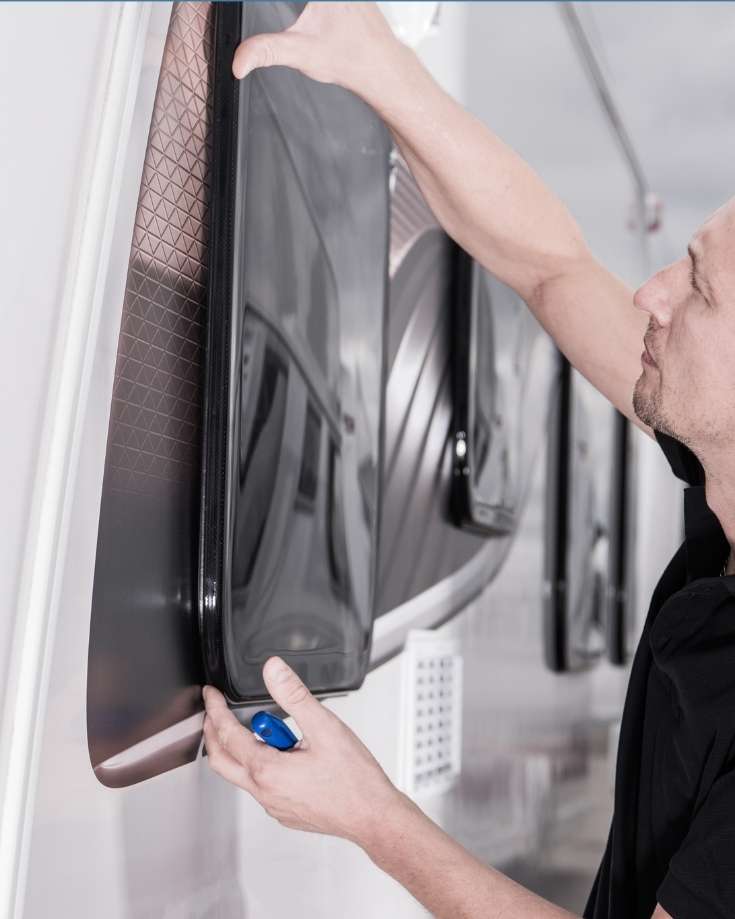
Idyllic summer days are behind us now, and it’s time to get serious about winter!
One thing that can really affect your home is a leaky seal. Seals on doors, windows, and hatches will let in cold air – which means you’ll need thicker clothing or leave the heating on higher for longer.
Check all rubber seals before it gets too cold out. Fixing anything you find will help prevent any major issues and eliminate drafts during chilly months.
Seal up those gaps! You’ll be glad you did when wintertime comes around again.
Insulate Roof Vents & Cupboards
In addition to windows and doors, insulating other openings in your RV, such as hatches, roof vents, and cupboards, is important.
It’s surprising how cold it is inside an uninsulated cabinet and how much heat loss that causes.
- Cover pipes with heat tape,
- Use foam board insulation inside cabinets and on the inside of the exterior walls,
- Vent insulators are ideal for covering vents without preventing airflow.
Maintain Good Airflow
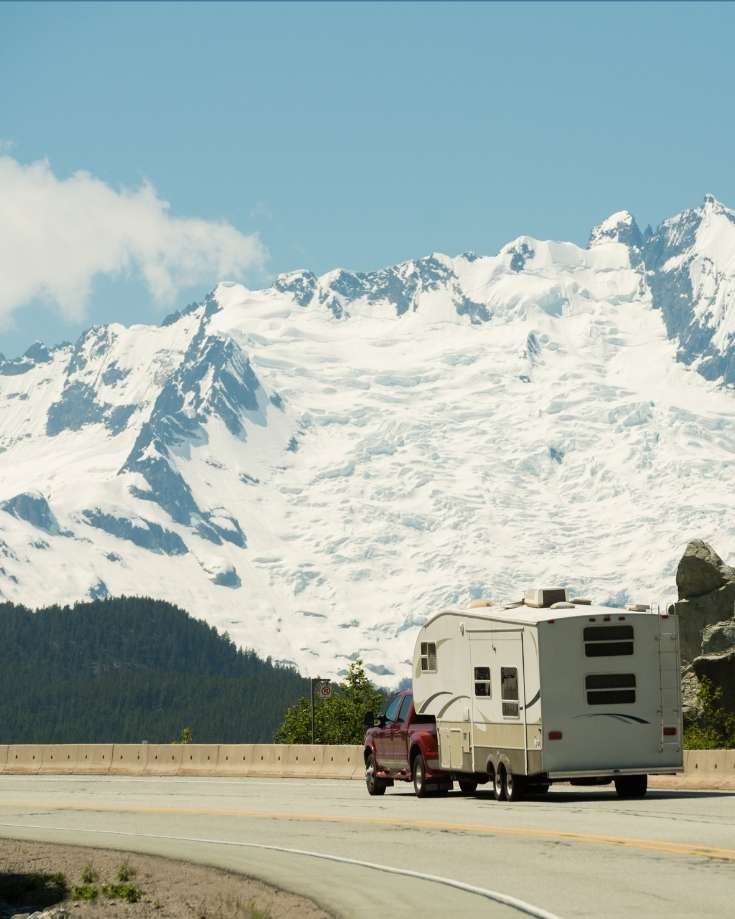
It may sound contradictory, but good airflow is essential for an insulated RV against the cold.
If you block all the vents in an attempt to keep heat in, you’ll end up with condensation and possible mold growth.
You need to find a balance between good ventilation and insulation.
An excellent way to do this is by using an RV roof vent. This will help to circulate the air and prevent any condensation from building up.
2. Use RV Skirting
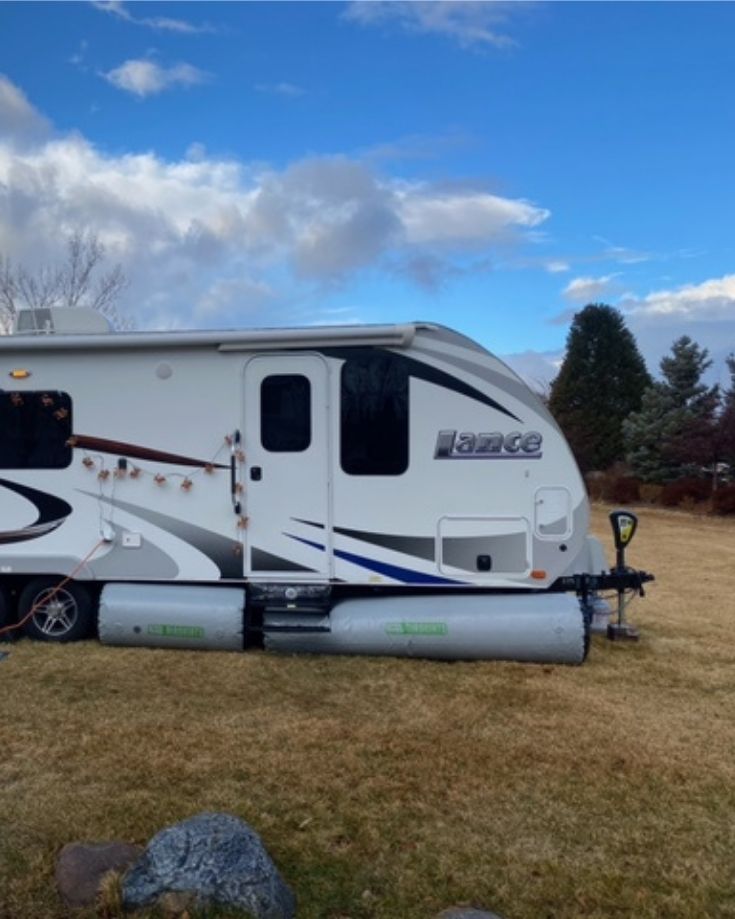
Another great way to insulate and keep your RV warm in winter is to use RV skirting.
RV skirting is placed around the RV’s base, usually made from fabric or vinyl.
It helps to prevent heat loss from the RV’s underbelly.
There are various skirting options available, including:
- AirSkirts Inflatable RV Skirting (our top pick)
- RV Skirting Pros
- EZ Snap Direct RV Skirting
- Custom RV Skirting
- DIY RV Skirting Ideas
- Fabric RV Skirting
- Foam Board RV Skirting
- Wood Skirting For RVs
Skirting effectively reduces your heating costs in winter. In addition, it can help extend your RV’s lifespan by protecting it from the elements.
Skirting is worth considering whether you want to save money or keep your RV in top condition.
3. Install A Diesel Heater
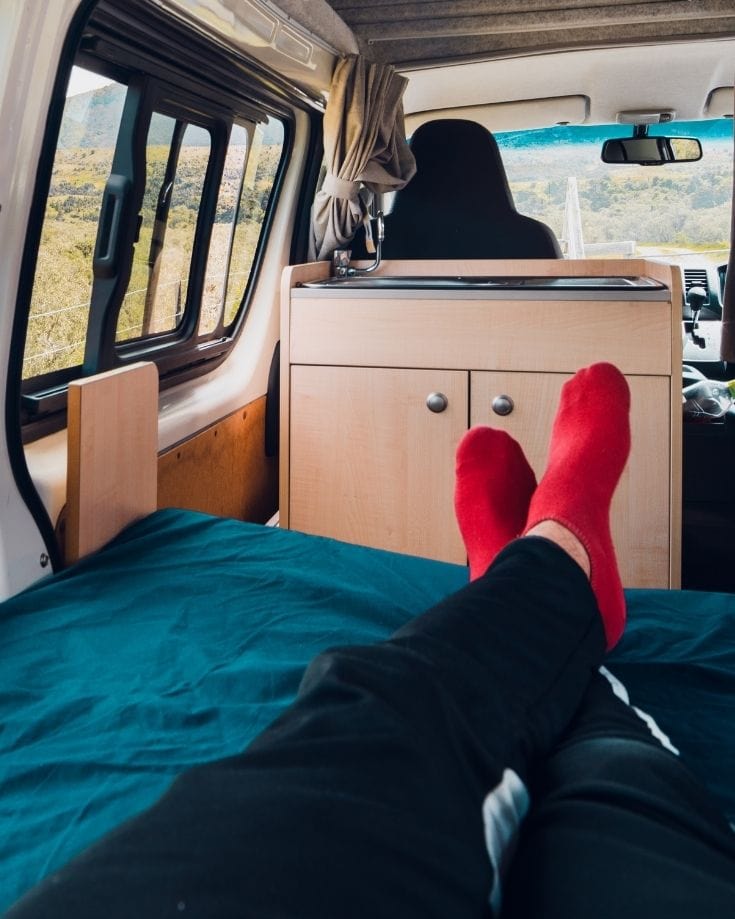
While propane heaters are a popular option, diesel heaters like Webasto and Espar are great alternatives with several advantages.
Diesel heaters work by burning diesel fuel to create heat. A thermostat controls the flow of diesel fuel to the heater, and a fan blows air over a heat exchanger, distributing the warm, dry air throughout the RV.
These heaters can be used while driving or parked and are often very quiet.
Because it has an external vent, it adds no moisture to the RV. This makes it an excellent option for those looking to keep their RVs dry and comfortable.
Diesel fuel is also less expensive than propane and readily available, so you’ll save on fuel costs if you switch to a diesel heater.
Diesel is also less flammable than propane, so you’ll have peace of mind knowing that your RV is safer from fire hazards.
So, if you’re looking for a safe, cost-effective way to heat your RV this winter, consider investing in a diesel heater.
4. Use A Portable Space Heater
Unless you are lucky enough to have a year-round spot in a warm climate, winter RVing usually means finding a way to keep your rig warm without breaking the bank.
Portable space heaters are ideal backups for heating an RV, especially if you run out of propane.
There are three main types of electric space heaters:
- ceramic,
- convection,
- and radiant.
Ceramic Portable Heaters
Ceramic electric heaters can also heat an RV without propane.
They use electricity to generate heat, and a heating element warms a ceramic plate. The hot plate then radiates the heat, warming the area around them.
Ceramic space heaters are suitable for spot heating because they provide targeted warmth.
They are also relatively quiet and have safety features like tip-over protection. However, they can take longer to heat a room than other space heaters.
Convection Portable Heaters
Instead of using a fan to push warm air around, convection heaters use convecting currents. Some models include fans to force air to circulate the convecting currents more efficiently.
Convection heaters can fill compact spaces with warm airflow faster than traditional electric or gas-powered models!
They’re great for heating large areas because they evenly distribute heat throughout the room.
And since they don’t have any exposed heating elements, they tend to be safer than ceramic or radiant space heaters.
However, they can be noisy, and some models can dry out the air in a room if used for extended periods.
Radiant Space Heaters
Radiant space heaters work by emitting infrared radiation, just like ceramic space heaters.
But instead of heating up a plate, they use quartz or metal coils as heating elements.
Radiant space heaters are good for spot heating because they provide targeted warmth. They provide heat faster than a convection heater that needs to warm the entire space before you start to feel warm.
They are also quiet because they don’t use fans and have safety features like tip-over protection.
However, they can take longer to heat a room than other types of space heaters, and you need to be in direct line with the heater to feel its warmth.
Powering Your RV Electric Heaters
The best portable space heater for your RV will depend on your specific needs and preferences.
But no matter what type of heater you choose, make sure your electrical system can cope with the demand.
Add Extra Batteries
If you’re dry camping or boondocking, you’ll need to ensure your heater doesn’t drain your batteries.
The last thing you want is to be stranded in the cold with a dead battery!
One way to avoid this is to add extra batteries to your RV electrical system. This will give you the power to run your space heater without draining your batteries.
Install Solar Panels
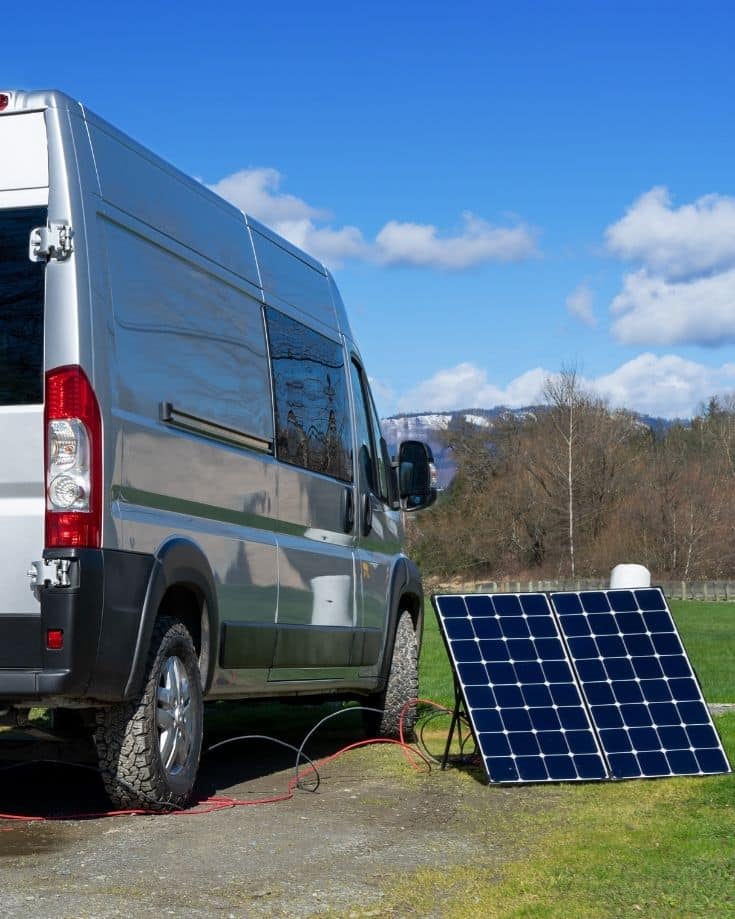
Another way to ensure your space heater doesn’t drain your batteries is to install solar panels.
Solar panels will recharge your batteries while you’re dry camping or boondocking, so you’ll always have the power you need to keep your RV warm.
Use A Generator
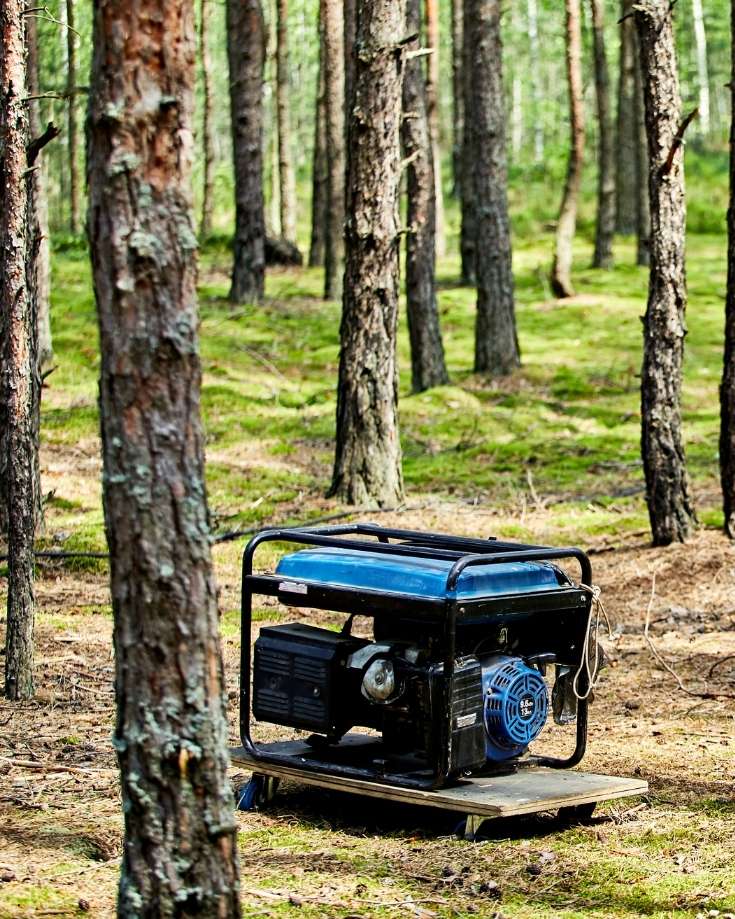
If you don’t want to add extra batteries, you can also invest in a portable generator.
This will give you the power you need to run your RV electric heaters without draining your batteries.
There are three types of RV generators:
- Diesel Generators
- Propane Generators
- Solar Generator
Whichever you choose, follow all the safety guidelines for using a generator. And ensure you have enough fuel to run it!
Use A Power Inverter
If you’re not dry camping or boondocking, you can still use a power inverter to power your RV electric heaters.
A power inverter converts DC power from your batteries into AC power that can be used to run household appliances.
5. Oil Heaters
Oil heaters are a great option for those with small generators or lack electricity during cold winter.
They work like a radiator and use electricity to heat an oil reservoir.
Because oil is super efficient at retaining heat, it stays warm for up to a couple of hours before the electricity kicks in again to increase the temperature.
Compare that to electric units that require a constant power source and lose their heat once switched off.
The downside is they take longer to heat in the first place, so it’s not ideal when you’re looking for a quick hit of warmth.
6. Wood Burning Stove
Wintertime camping in an RV can be a magical experience.
There’s something about being bundled up in front of a wood-burning stove on a cold night that can’t be beaten.
Using a wood-burning stove to heat an RV without electricity or propane has several advantages.
- They create a dry heat that won’t cause a buildup of condensation,
- Are essentially a free heat source after the initial investment (if you gather wood) and
- They can efficiently heat a small space like an RV, even in the coldest climates.
If you’re considering making the switch to a wood stove, here are a few things to keep in mind:
- You’ll need to have a good supply of wood. If you don’t have access to your own woodlot, you can usually find wood for sale at camping and hardware stores.
- Wood stoves produce smoke and ashes, so you’ll need to be prepared to deal with the mess.
- You’ll also need to ensure the flue from your wood stove is the proper size and installed correctly to avoid any safety hazards.
- Some campgrounds don’t allow wood-burning stoves, so check with the campground before you make the switch.
If you’re looking for an efficient and cozy way to heat your RV, a wood stove is the way to go!
7. Heated Flooring
Another option for keeping your feet warm in an RV during winter is heated flooring.
By using mats, you can keep your RV’s temperature consistent without using a space heater.
In reality, this is only an option on high-end RVs where it comes as standard or if you’re refitting an RV from the ground up.
You can help to add further insulation to your floor by using rugs and interlocking foam boards and keeping the heat in.
Using these methods, you can ensure that your toes are warm and comfortable all winter.
8. Layer Up
No one likes being cold, especially when trying to enjoy a winter RV camping trip.
Luckily, you can do a few things to stay warm without running up propane or electric bills.
Dress In Layers
One of the best ways to stay warm is to dress in layers. If you feel too warm, you can always take a layer off.
Start with a base layer of thermal underwear or long johns. You can add a pair of pants, a shirt, a sweater, and a coat.
Also, wear socks and even a wooly hat. You can always take off a layer or two if you get too warm. And if you start to feel chilly again, you can put them back on.
Use Soft Furnishings
Another way to keep warm is to use soft furnishings like blankets and pillows. These can help insulate your RV and make it feel cozier.
They also add extra warmth when you need them. Just make sure not to block any heaters or vents so the heat can circulate properly.
9. Choose Suitable Bedding

When temperatures drop at night and you’re living in your RV, it’s important to have the right bedding to stay warm.
A good quality mattress topper, heated blanket, and comforter can make all the difference in staying comfortable and reducing your heating bills.
Mattress Toppers
A mattress topper is an easy way to add an extra layer of insulation and warmth to your bed.
A topper can also help prolong the life of your RV mattress by absorbing some of the wear and tear.
When choosing a mattress topper, look for one that’s made with a high-quality material like latex or memory foam.
You’ll also want to consider the thickness of the topper. A thicker topper will provide more insulation but may be too warm for some people.
If you tend to sleep hot, opt for a thinner topper or one that’s made with a cooling gel.
Heated Blankets
Electric blankets are a popular way to stay warm at night but can be a fire hazard if not used properly.
If you use an electric blanket in your RV, ensure it has an automatic shut-off feature and never leave it unattended.
Another option is a battery-operated heated blanket.
These blankets are safe and easy to use but may not generate enough heat for some people.
If you plan on using a battery-operated heated blanket, ensure it’s fully charged before bed.
Comforters
Comforters are another way to add warmth and insulation to your bed.
Down comforters are the best for an RV because they’re lightweight and packable. They’re also effective at trapping heat, so you won’t need as many blankets underneath.
When shopping for a down comforter, look for one filled with duck or goose down—not feathers—with a high fill power (700 or higher).
The higher the fill power, the warmer the comforter will be.
Hot Water Bottle
A hot water bottle is a great way to add extra warmth to your bed.
Fill the bottle with hot water and slip it under the covers before bed.
The heat radiates through the bedding and helps you stay warm all night.
In Conclusion
Heating your RV without propane can be a challenge, but it’s not impossible.
You can do a few things to ensure your RV stays warm all winter without relying on propane.
By:
- dressing in layers,
- using soft furnishings,
- choosing the right bedding,
- insulating your RV using skirting or
- investing in one of the many different types of electrical heating options,
you’ll be able to stay comfortable while enjoying your winter camping trip.
Leave a comment below and let us know how you stay warm in your RV without using propane!
Angela Devaney

Angela Devaney, a former IT project management professional, embarked on an adventurous journey of full-time travel, which included touring West Africa in a converted overland truck and converting an ex-military 4×4 Sprinter van into a camper for a five-year South American expedition. She now utilizes her hands-on experience to create practical RV living and van life advice as a full-time digital media producer, reaching over a million users annually through her YouTube channel, blog, and newsletter. Angela also lends her expertise as the editor-in-chief of the Campervan Electrics Handbook.

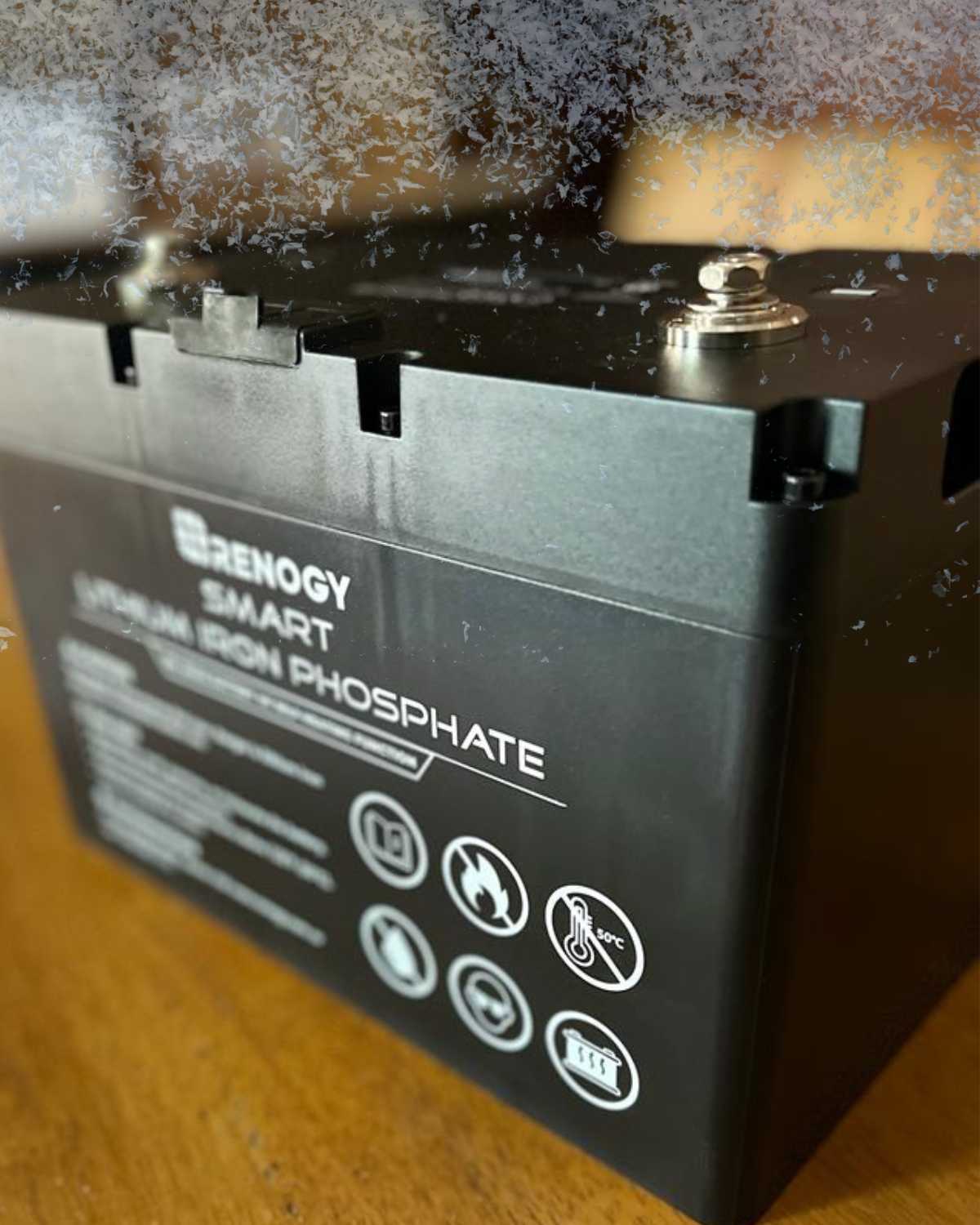
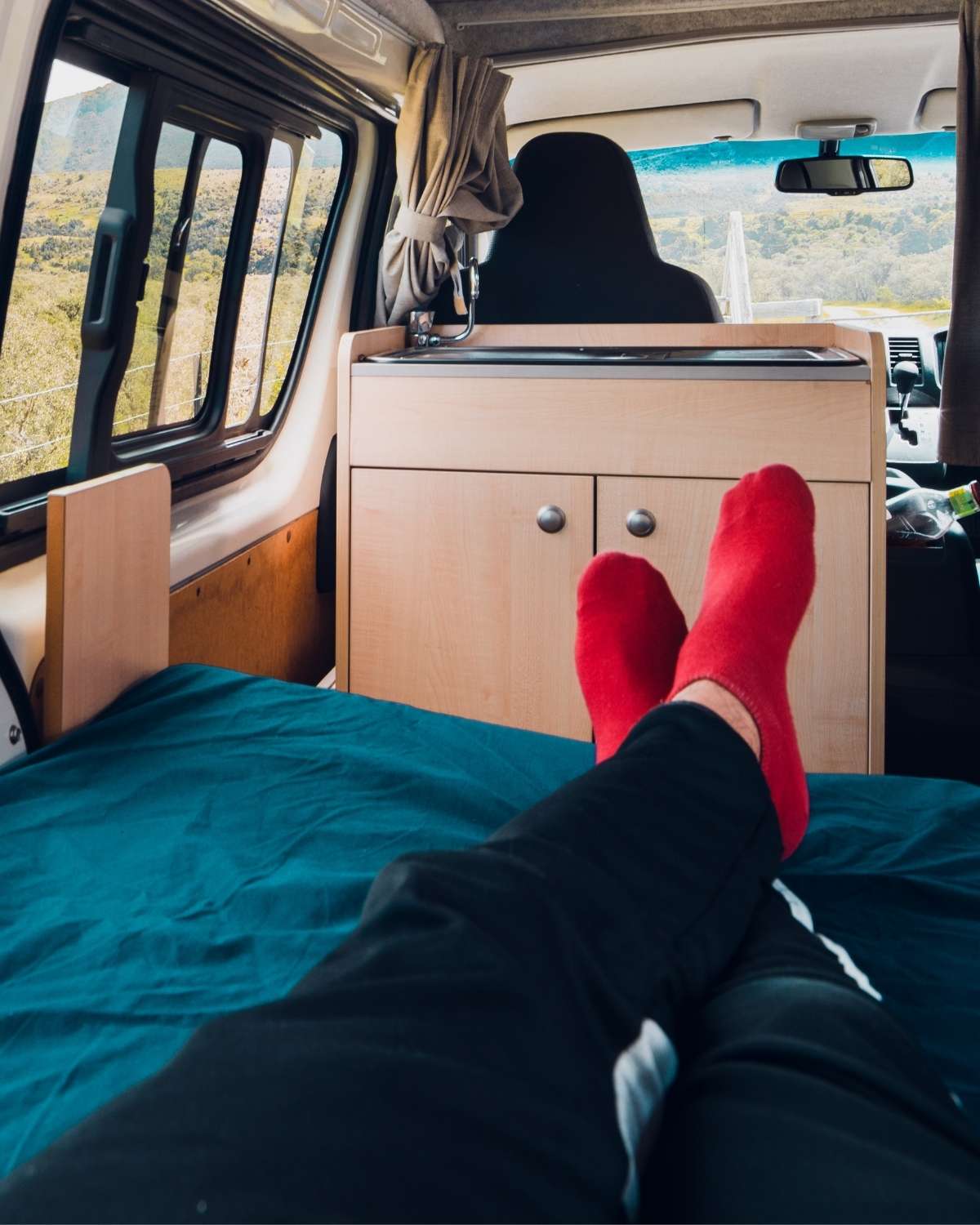

Im in Maine and live full time in a restored 32yr old 38′ motorhome. I built a 44×16 garage to house my RV and covered the RV with a breathable RV cover AND a heavy duty 60×40 tarp during the winter months last year. I also added extra insulation to all the plumbing areas and installed a couple of small thermostatically controlled ceramic heaters in those same areas. I also installed 12v heating pads to the undersides of all my storage tanks(grey water, black water, etc). While i had no trouble staying warm and no troubles whatsoever with plumbing, I would NEVER recomend electric heating. Not even over propane. I tried heating with two efficient electric heaters for the 1st two months of winter last year and paid between 250 and 300 on my power bill. I switched to my propane furnace, starting in Jan and my power bill dropped to $35 to $45/month and I only needed to fill a hundred pound propane tank once every two weeks at $50-$60 per tank full. So thats a total of $165/month(max) compared to nearly $300/month. Electric heat is never a good way to go these days unless its your only choice.
Ive taken even more steps to keep the heat in for this winter(such as skirting the RV and covering the roof with 2 inch styrofoam sheets prior to draping the tarps overtop). My propane furnace rarely comes on. My set up helps my RV hold in the heat for a long time.
One last thing Ill mention is that, depending upon how the plumbing in the underbelly of your RV is set up, you may get away with installing storage tank heaters ONLY. I found that it never got cold enough in the plumbing areas of my RV to make the ceramic heaters I put down there to come on. I attribute this to the fact that the 12v storage tank heaters always kept the fluid in the storage tanks relatively warm and this warmth continuously radiated out into the RVs “basement” and to the plumbing there. Remember, of course, that Ive added extra insulation to those areas as well.
I just bought 2 sm ceramic heaters for my 28′ 5th wheel. 1 in the living/dining area & 1 for the bedroom/bath area. I’ll be investing in some Reflectix when I can. So far the heaters are working out.